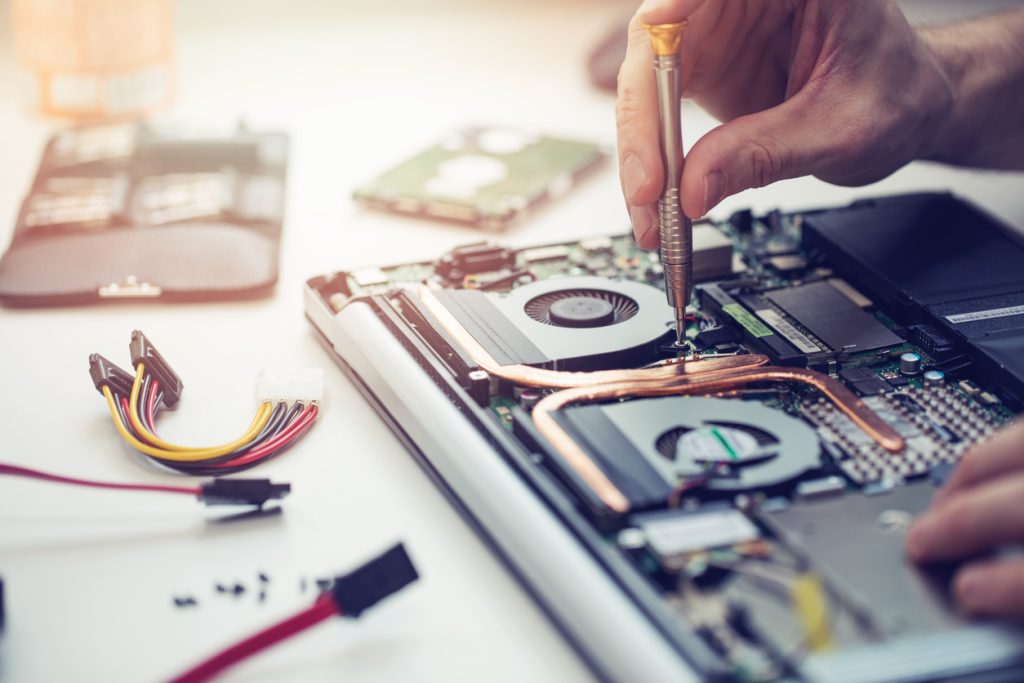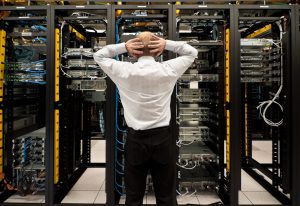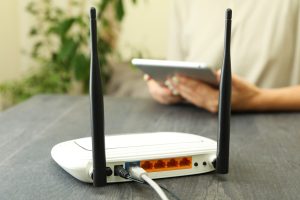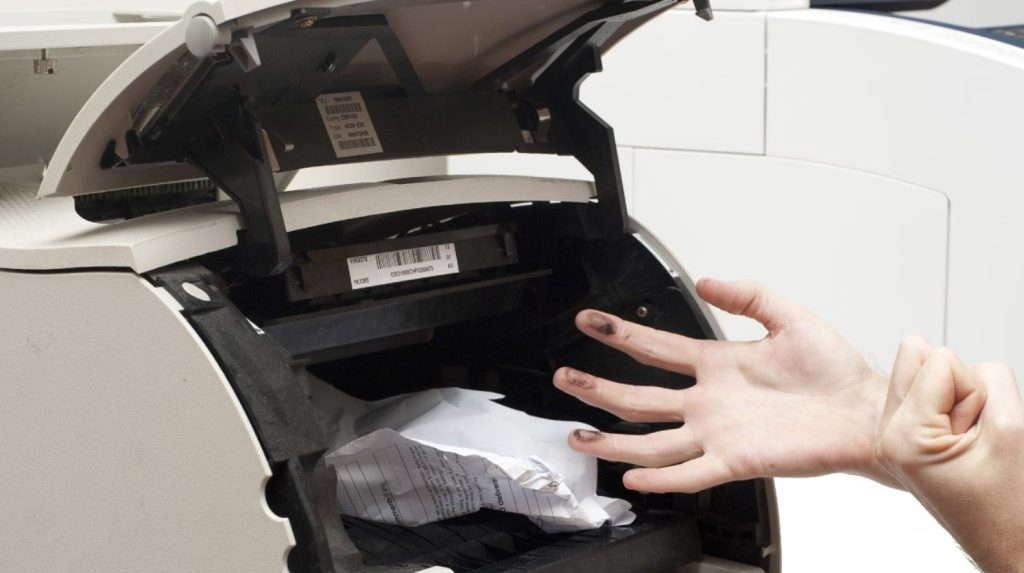
A seamless and effective IT infrastructure is critical for managing operations and being competitive in today’s fast-paced business world. Even the most advanced technologies, however, can suffer from hardware problems, disrupting business and causing frustration. In this article, we will delve into the realm of troubleshooting hardware failures and explore effective ways to address common IT equipment issues.
Malfunctioning Servers as Hardware Failures
What are Malfunctioning Servers?
Malfunctioning servers refer to the situation where the powerful computers that manage important data and services in a business’s network encounter problems and stop working correctly. Certainly, servers play a critical role in storing files, hosting websites, and managing emails, making their proper functioning crucial for business operations.
What are the most common server problems experienced by Businesses?
Businesses often face common server problems that can disrupt their operations. These include unexpected server shutdowns, slow response times, and applications freezing or not working as expected. These issues can cause frustration and lead to downtime, affecting productivity.
How to troubleshoot malfunctioning server issues?

Troubleshooting malfunctioning server issues can be tackled step by step:
Check Indicator Lights
Servers usually have lights that show their health. If you see any unusual patterns, consult the server’s manual for guidance.
Look at Error Messages
Servers often generate error messages. These messages can give you hints about what’s wrong.
Restart the Server
Sometimes, a simple restart can fix minor glitches that cause problems.
Inspect Cooling Systems
Servers can overheat, causing issues. Make sure fans are working and there’s proper ventilation.
Review Connections
Check cables and connections to make sure everything is securely plugged in.
Consult Documentation
Server manuals often have troubleshooting sections with solutions to common problems.
Seek Professional Help
If you’re unsure or the issue seems complex, don’t hesitate to contact IT experts who specialise in server maintenance. They can quickly diagnose and fix the problem, getting your business back on track.
Remember, the goal is to identify what’s causing the server hiccup and fix it as soon as possible to minimise disruption to your business operations.
Network Equipment Issues
What causes Network equipment issues?
Network equipment issues can be triggered by various factors, including outdated firmware and software, faulty cables, misconfigured devices, and even environmental elements like electromagnetic interference. Proper maintenance and regular updates are crucial to preventing these problems. Moreover, network failures can result from a range of causes, such as misconfigured routers, switches, or modems, leading to communication breakdowns. Hardware failures, including malfunctioning network cards or routers, can also contribute. External factors like power outages or issues with the Internet Service Provider (ISP) can further lead to network failure.
What are the most common network problems?
Businesses commonly encounter network problems such as slow internet speeds, devices unable to connect to Wi-Fi, dropped connections, and difficulty accessing websites or applications. These issues can disrupt work and hinder effective communication.
How to fix network connection problems?
When tackling network connection problems, consider these steps:

Restart Network Devices
Turn off and on routers, modems, and switches. Sometimes, a fresh start can resolve minor glitches.
Check Cable Connections
Ensure the cables are securely connected. Loose or damaged cables can disrupt network connectivity.
Update Firmware
Keep network equipment up to date by installing the latest firmware from the manufacturer. This can address known issues and improve performance.
Verify IP Addresses
Duplicate IP addresses can cause conflicts. Ensure each device on the network has a unique IP address.
Adjust Firewall Settings
Overly strict firewall settings can block legitimate network traffic. Review and adjust firewall configurations as needed.
Test with Different Devices
If a particular device is experiencing issues, check if the problem persists on other devices. This can help isolate the source of the problem.
ISP Check
If the issue seems widespread, contact your Internet Service Provider to determine if there are service outages or other problems on their end.
Professional Assistance
If troubleshooting doesn’t yield results, consider seeking help from IT professionals who specialise in networking. They can identify and address more complex issues.
By following these steps, businesses can effectively address network problems and ensure smoother communication and collaboration.
Keeping network equipment updated and well-maintained is key to preventing future issues and ensuring the reliability of your network.
Printer Problems
What is the most common printer problem?
A common printer problem is when the printer doesn’t print properly or doesn’t print at all. It can be really frustrating, especially when you need to get important documents on paper.
What causes the printer to not print properly?
Several things can lead to printing issues. Outdated or incorrect printer drivers are a common culprit. Sometimes, the paper might be jammed, or the ink or toner could be running low. Connectivity problems between the printer and the computer or network can also hinder printing.
How do I fix an unresponsive printer?
If your printer is unresponsive, try these steps:
Check Power and Connections: Make sure the printer is turned on and connected properly to the computer or network.

Restart the Printer: Turn the printer off, wait for a few seconds, and then turn it back on. This can often clear up minor glitches.
Clear Print Queue: If there are multiple print jobs in the queue, one of them might be causing the issue. Clear the print queue and try printing again.
Update or Reinstall Drivers: Outdated or corrupted drivers can cause printing problems. Visit the printer manufacturer’s website to download and install the latest drivers.
Check for Paper Jams: Paper jams can halt printing. Carefully open the printer and remove any jammed paper.
Check Ink or Toner Levels: Low ink or toner can result in faded prints or incomplete documents. Replace cartridges if necessary.
Verify Network Connectivity: If the printer is connected over a network, ensure it’s properly connected and has the right IP address.
Test with a Different Document: Sometimes, the issue might be with the specific document. Try printing a different file to see if the problem persists.
Printer Manual: Consult the printer’s manual for troubleshooting specific to your model.
Professional Help: If the problem persists despite your efforts, consider contacting IT support or a printer technician for assistance.
By following these steps, you can often troubleshoot and fix printer problems without too much hassle.
Regular maintenance, like keeping the printer clean and ensuring it has the latest drivers, can also help prevent future printing issues.
Hardware Component Failures
What are the most common hardware failures?
Hardware failures happen when parts inside computers stop working like they’re supposed to. This can make the computer crash, run slowly, or even turn off completely. Common parts that can fail include memory (RAM), hard drives, and graphics cards.
As a matter of fact, businesses often face problems like computers freezing, programs crashing, and getting a “blue screen of death” error. If the hard drive stops working, important data can be lost. If the RAM doesn’t work right, the computer can act strange. Graphics card issues might make pictures look weird or the screen flicker.
Here’s an example: Imagine your computer won’t start, and the screen stays black no matter how many times you press the power button. This could be because the power supply unit (PSU) stopped working. It’s like the part that brings power to the whole computer suddenly stopped doing its job.
What could cause hardware failure?
Hardware failures can be triggered by various factors. Components can wear out over time due to regular usage. Manufacturing defects, electrical surges, overheating, and physical damage can also lead to hardware failures. Poor ventilation and excessive dust buildup can contribute to overheating and subsequent failures.
What is the risk of hardware failure?
Hardware failure poses significant risks to businesses. It can lead to downtime, loss of productivity, and data loss. These disruptions can result in missed deadlines, frustrated employees, and potentially even lost business opportunities.
How to prevent hardware failure?
Preventing hardware failure requires proactive measures:
Regular Maintenance: Keep your computers clean and dust-free. Ensure proper ventilation to prevent overheating.

Backup Data: Regularly back up important data to prevent loss in case of a hardware failure.
Quality Components: Invest in high-quality hardware components from reputable manufacturers to reduce the risk of manufacturing defects.
Update Drivers: Keep drivers up to date. Outdated drivers can lead to instability and crashes.
Surge Protectors: Use surge protectors to safeguard against power surges that can damage components.
Proper Handling: Handle hardware with care to avoid physical damage. Avoid static electricity when working on components.
Temperature Control: Maintain a suitable room temperature to prevent overheating.
Professional Maintenance: Periodically, have IT professionals perform maintenance and diagnostics on your systems.
By implementing these strategies, businesses can significantly reduce the risk of hardware failures, ensuring a more stable and reliable IT environment. Remember, preventing hardware failure not only saves time and money but also contributes to the overall efficiency and success of your business operations.
Navigating IT Challenges with Confidence
In conclusion, in today’s dynamic business landscape, a proactive approach to hardware failures is crucial for maintaining operational efficiency. By understanding the most common problems, their underlying causes, and implementing strategic solutions, businesses can overcome IT equipment challenges with confidence. Undoubtedly,, regular maintenance, timely diagnostics, and staying informed about the latest developments in hardware technology are key steps to ensuring a reliable and high-performing IT infrastructure. Remember, while troubleshooting can often resolve minor issues, seeking professional IT support is advisable for complex or recurring problems. By following these guidelines, businesses can ensure their IT systems remain robust, productive, and ready to meet the demands of the modern world.



